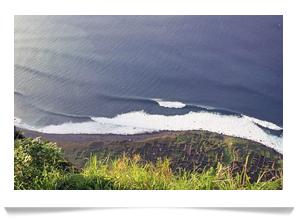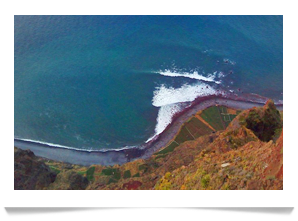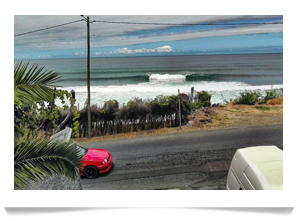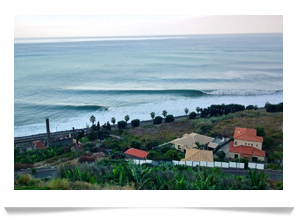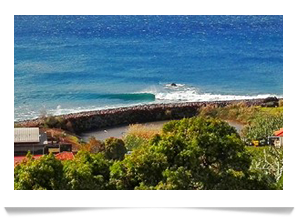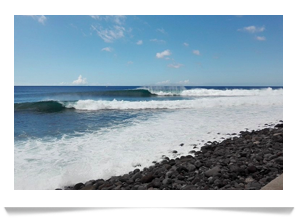






.jpg)
.jpg)












Southwest of the Portuguese coast, Madeira Island is known as the Pearl of the Atlantic and has been christened the European Hawaii by the surfers who first enjoyed its powerful challenging waves. Jardim do Mar, Paul do Mar and Ribeira da Janela are some of the best known spots, but other better kept secrets are known only to the locals.
The Powerful swell and crystal clear water are bound get your adrenaline running and bring you full satisfaction. The crowd is small and the locals are known for their hospitality.
The archipelago was discovered in the XV Century by Portuguese navigators and it is now an autonomous region composed of the main Madeira Island, Porto Santo, the Selvagens and the Desertas. Its main cash flow comes from tourism and surfing is an increasingly popular activity.
The unique and beautiful landscape is made up of abrupt mountains and stunning green and blooming valleys. The black sand beaches and the famous Levadas – pathways along the mountains – are also a typical feature. The wine and local poncho, as well as the meat skewers, bolo do caco bread and bananas are some of the most famous Madeira products, besides, of course, the best football player of our times, Cristiano Ronaldo.
Carnival, the flower festival and New Years are the high seasons for tourism.
Madeira enjoys a subtropical oceanic climate, due to the Azores anticyclone and the weather is often mild with some seasonal temperature variation. The maximum temperatures vary between 25 degrees in the summer and 20 in the Winter and the minimum between 20 and 30 degrees respectively. The South and West coasts have an average temperature which is slightly higher than the North Coast, and it gets cooler as you go inland to the mountainous region. November to February are the peak months for rain and it is drier between May and October. You won’t need a wetsuit to surf between July and October, when the water temperature reaches 24 degrees.
Just like Portugal and most of Europe, winter is when the best waves hit the island. September to April are the more consistent months, but the “premium” season is November through February due to the bigger swell but also because that is when the offshore wind puts in more of an appearance. The west coast is often more exposed to the offshore wind than the North coast.
|
SURF CHECK |
JAN/FEB |
MAR/APR |
MAY/JUN |
JUL/AUG |
SEP/OCT |
NOV/DEC |
|
CONSISTENCY |
65 |
50 |
30 |
25 |
50 |
60 |
|
AVERAGE SIZE |
2 M |
1,5 M |
1,2 M |
0,8 M |
2 M |
2,5 M |
|
TRAVEL |
GUARANTEED |
GOOD SEASON |
NO |
NO |
GOOD SEASON |
GUARANTEED |
|
WATER TEMPERATURE |
16º |
17º |
19º |
22º |
21º |
19º |
|
AIR TEMPERATURE |
16º |
17º |
20º |
23º |
22º |
19º |
The West coast, which gets more sun, has an average temperature of 20 degrees pretty much year round.
